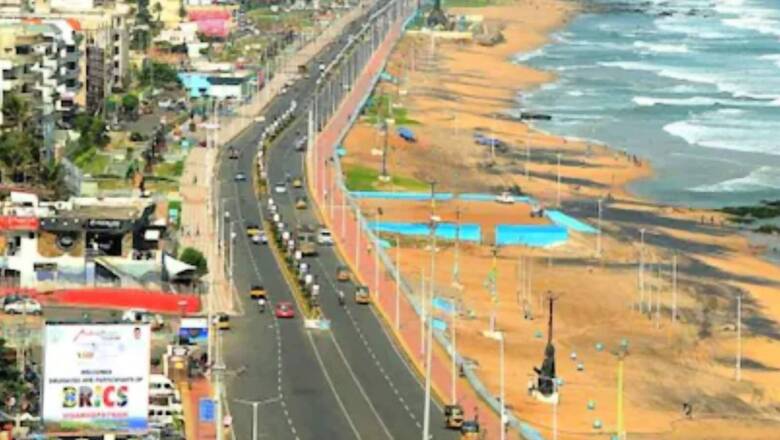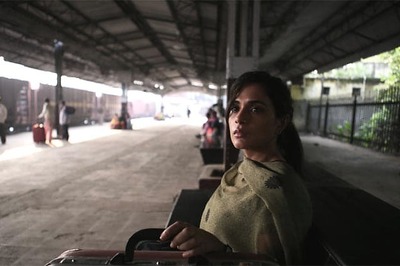
views
Let me at the outset invoke the lines that echo eternally, of one of Telugu literary icons, Gurajada Apparao, “Desam ante matti kadoyi, desam ante manushuloyi”, which means “A nation is not the land or the soil, but it’s the people inhabiting that land”. These words resonate even today, after more than a century since they were composed in 1910.
Fast forward to the present era, the first state of India to be created on linguistic basis, post Potti Sriramulu’s fast unto death in 1953, finds itself at a crossroads, staring at an uncertain future. So, what is going on in truncated Andhra Pradesh? In short, it is the ongoing controversy related to the decision by Chief Minister YS Jaganmohan Reddy to have a decentralised capital, with Vizag as the executive capital, Amaravathi as the legislative capital and Kurnool as the judicial capital.
To provide perspective to the readers, I briefly discuss the controversial decision of the previous Telugu Desam Party (TDP) government (2014-19), led by Chandrababu Naidu (CBN), to unilaterally establish a greenfield capital for bifurcated Andhra Pradesh at Amaravathi in between the small towns named Vijayawada and Guntur. Controversy erupted immediately after Naidu introduced the Capital Region Development Authority (CRDA) Bill in the state Assembly and proposed making Amaravathi the capital of Andhra Pradesh. The location proposed for Amaravathi was primarily fertile farmlands, with round the year cultivation not far from the Krishna Delta region.
Opposition parties, including Jagan Reddy’s YSRCP, criticised the move claiming that the region is fertile and acquiring such lands will disrupt the livelihoods of farmers and agricultural output. However, the TDP government included provisions in the bill that incentivised farmers to voluntarily give up their lands, in lieu of a developed plot of land, when the capital gets established. Instead of going for land acquisition, the administration termed this as land pooling strategy and several farmers, who were initially hesitant eventually made way for the capital city, hoping for a better deal later on. Naidu promised a high tech and sleek capital city for Andhra on the lines of a city like Singapore. Ironically, he even signed an MoU with a Singapore based consortium called Sembacorp to create special VFX on how the capital city will look like.
The decision, however, to create a greenfield capital seemed premature for several observers, given the dire financial situation the state was faced with in light of the bifurcation and loss of significant state revenue, to Telangana, with Hyderabad being the powerhouse. In fact, it was even mentioned by the Justice Sivaramakrishnan Committee (constituted to identify the new capital for Andhra Pradesh) that the current speculation around the capital city being located in Vijayawada-Guntur region may not be pragmatic.
He said, “Any attempt towards concentration of the government offices within the urban area of Vijayawada-Guntur will have to consider other consequences such as the strain on infrastructure and possible unplanned expansion of urban areas. Importantly, it will also adversely affect the development prospects of other areas in Andhra by sucking much private and speculative capital into the area. Besides, the districts of Krishna, Guntur and West Godavari comprise some of the best agricultural lands in the country, contributing more than one percent to the country’s rice production and is often referred as the rice bowl of the country.”
The report also categorically mentions, in the Committee’s Terms of Reference, “least possible dislocation to existing agriculture systems” in the Vijayawada-Guntur-West Godavari region. Additionally, the report also cautioned the state government on the high water table levels and the region not being conducive for establishing a city. The report, in this regard, mentions the following: “The water table in this area is generally high. The Geological Survey of India has carried out a seismic microzonation in this area and has highlighted the problem of high water table and vulnerable soil types, which together may lead to severe problems of foundations and soil bearing capacities. This itself is one of the reasons why there are not many high rise buildings in this area.”
Instead, the committee advocated for distributed development of the state, with all the three regions of the state namely, Uttarandhra, Central Andhra and Rayalaseema, being hubs for various industries such as fisheries, heavy manufacturing, automotive, agriculture, etc, based on the local needs and resource availability. The committee further recommends the following: “In keeping with the dominant objective of decentralised development of the Andhra state, the Committee has identified three regions or sub-regions where capital functions and other institutions can be distributed. These subregions are the Vizag region in Uttarandhra; Rayalaseema Arc comprising Kurnool, Anantapur, Tirupathi, Kadapa and Chittoor; and ‘Kalahasti-Nadikudi spine’.”
The previous TDP government, however, paid no heed to the recommendations made by the Sivaramakrishnan Committee Report, and decided to go for land pooling to establish the capital at Amaravathi. The Opposition parties, reluctantly, agreed for the establishment of the state at Amaravathi, although left no stone unturned in alleging that Naidu was working in the interests of his caste base, who are politically and economically dominant in the region where the new capital was planned.
However, this unilateral decision was widely criticised as being undemocratic especially by the residents of both Uttarandhra and the Rayalaseema regions. Both these regions are underdeveloped and have for decades been ignored by the political class of the state. Uttranadhra is home to the biggest and only cosmopolitan city of Andhra Pradesh in the form of Vizag, while Rayalaseema is home to Kurnool, which was the capital for Andhra state between 1953 and 1956 before the merger of Telangana to create the state of Andhra Pradesh.
Coming back to contemporary times, Jagan Reddy, soon after becoming the CM post 2019 landslide electoral victory, announced his plans to create three capitals for the state and repealed the CRDA Act. Moreover, he announced his plans to shift executive functioning of the Government of Andhra Pradesh to Vizag and restrict Amaravati only for Assembly sessions, in addition to establishing a High Court bench in Kurnool. Several commentators have pointed out that this was a decision taken in order to politically destroy his opponents from TDP and destroy their caste base, who are alleged (according to YSRCP members) to have amassed land resources in the Amaravathi. Remember, the two dominant castes in Andhra are the Reddys and Kammas with a long standing bitter rivalry for political dominance.
As an observer of politics in Andhra Pradesh especially over the last couple of decades, it is clear that this caste rivalry seems to have serious implications for the greater good of the state. Naidu and his TDP administration tried populism, emulating late former Congress CM YS Rajasekhar Reddy (YSR), only to fail miserably. Apart from the fictional stories and VFX of the new capital, the city remains fictitious and nowhere to be seen on the ground. Jagan, continuing his dead father YSR’s legacy, continues his populism and has further pushed the state into massive debt burden. Civil infrastructure in Andhra is crumbling rapidly and given there is hardly any new private investment, the state’s youth have no choice but to migrate to other states for employment opportunities. Moreover, as the decision of three capitals taken by the government of Andhra Pradesh has been challenged in the state high court previously, there is uncertainty and speculation.
The previous TDP government should ideally have chosen Vizag as the capital right after bifurcation of Andhra Pradesh, instead of grandiose and impractical ideas to create a new capital. What the TDP government effectively did by making Amaravathi the capital was to deny Vizag its rightful due. The TDP government used Vizag for pitching Andhra as an investment destination, however, wanted investors to move to an isolated location, in the middle of nowhere which is poorly connected and was created by literally levelling fertile farm lands.
Even the TDP’s logic of the capital to be located centrally in the state stands on shaky grounds. After all, the national capital is located in northern India and other state capitals like Mumbai, Chennai, Thiruvananthapuram, Kolkata, Bengaluru, etc, are all located in one corner of the state. Making Vizag the capital would have led to private investments, improved connectivity, revenue generation, employment opportunities, etc. The city is endowed with salubrious weather and beautiful coastline, unlike any other city in the country. The investment to create the capital related buildings would have been minimal and all that is needed is to augment existing infrastructure.
Overall, the future of the state remains uncertain as of today and unless this capital conundrum is resolved as soon as possible. There are growing voices of dissent and regional sentiments both in Uttarandhra and Rayalaseema will manifest sooner or later. In the interest of Telugu people and Telugu sentiment, both these regions have remained silent despite unilateral decisions regarding state capital. Now with the three capital promises regional sentiments have yet again been stoked up.
Andhra Pradesh is the only state down south, which does not have an operational metro city, a full-fledged international airport and the lowest human development indices. In conclusion, make Vizag the capital of the state and promote it as an investment hub. Rayalaseema is sandwiched between three metro cities viz. Hyderabad, Bangalore and Chennai. Hence, the region will find investment in any case. Let farmlands between Vijayawada and Guntur towns be farmlands. You cannot create a mega city there and doing so will be an environmental disaster, prone to flooding from the Krishna river.
For the greater good of the country and to tap the talent of the underdeveloped central-eastern region of India, i.e. Chhattisgarh, Odisha and other remote areas, creating a metro city in the form of Vizag is a necessity. Failing which, the state will trifurcate or will become a BIMARU state down south. Wake up! Do not destroy the future of Telugu people and by extension Telugu culture.
The writer is a political commentator. Views expressed are personal.
Read all the Latest Opinion News and Breaking News here




















Comments
0 comment